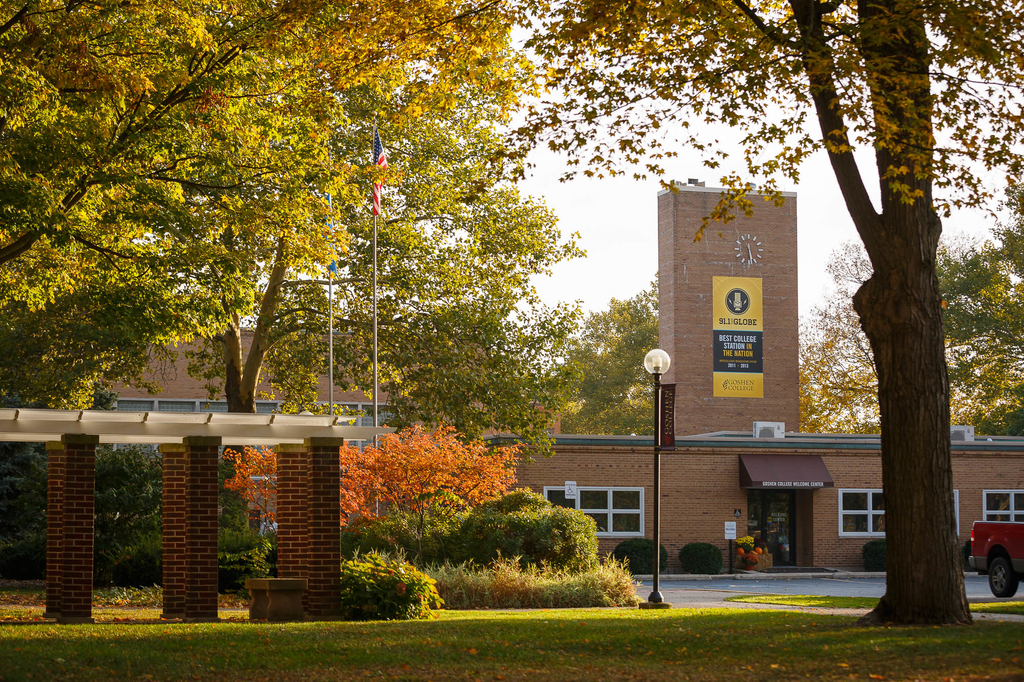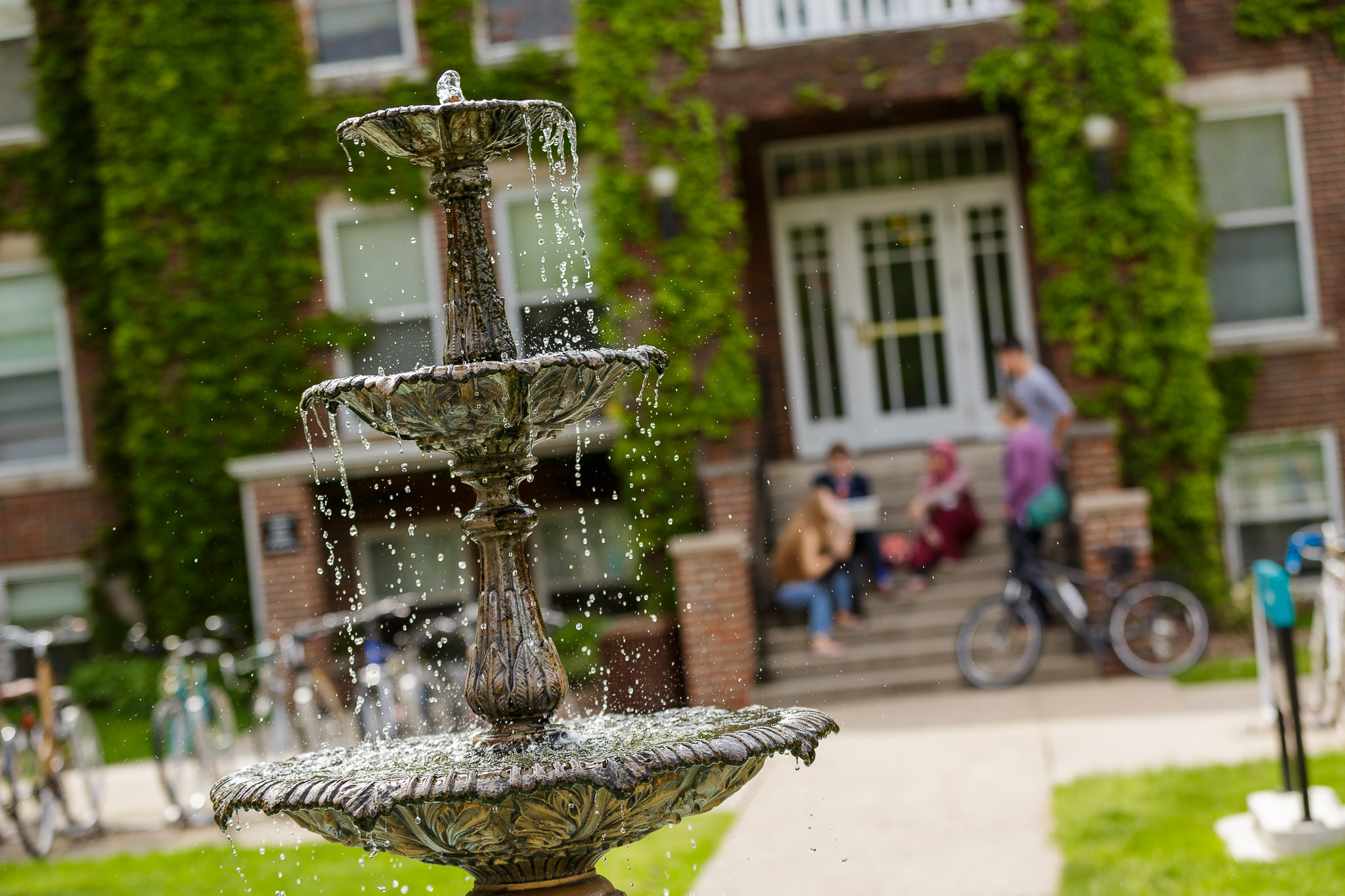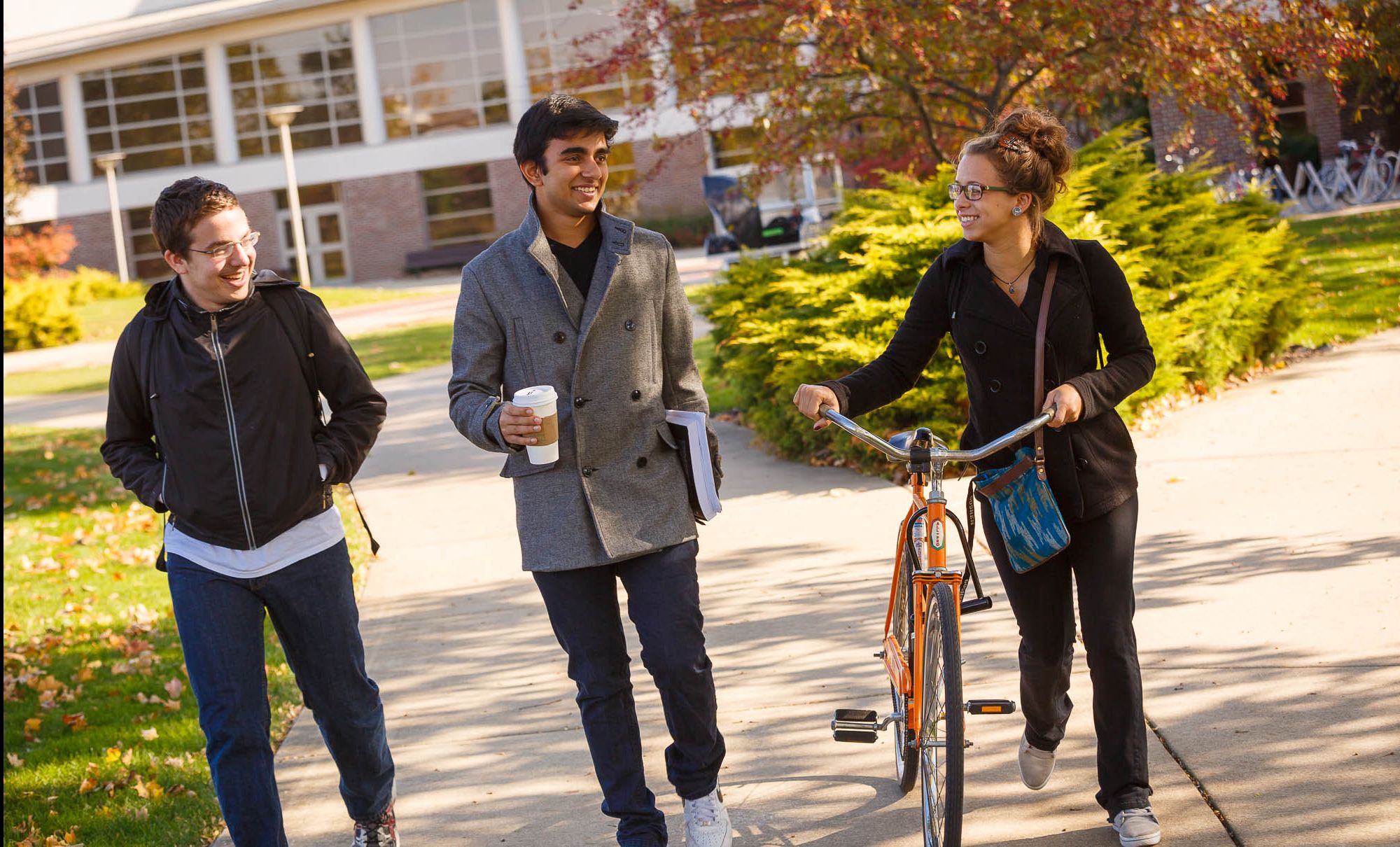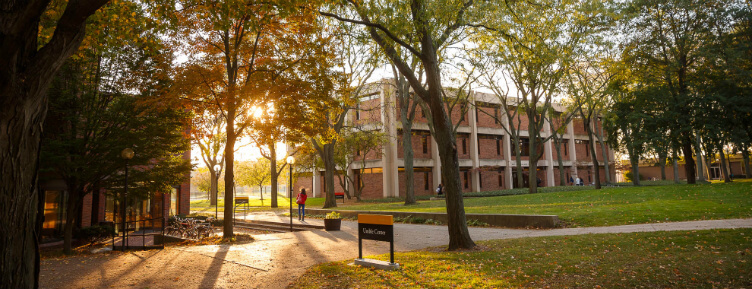On Tuesday, we had the opportunity to listen to and interact with Luke Gascho, who retired in 2019 after spending 22 years as the executive director of Merry Lea Environmental Learning Center. He currently runs a fruit, nut, and berry orchard and garden at his home, called Half-Moon Rising.
He started his presentation by handing out copies of a map and two journal entries from 1830 and asked us to analyze them. It was quite challenging as the journal entries had lots of words in it that we did not understand, and the type of cursive the person wrote with wasn’t easy to read. As Luke helped us through reading the journal and comparing it to the map, we realized it was a map of Goshen from before colonization. A surveyor was mapping the land in grids and noted where giant stakes would be made at certain intersections on the grid. One of these stakes was right at the intersection of Main Street and College Avenue. The map also included several landmarks, such as the Elkhart Prairie, the Elkhart River, and a trail used by the local Indigenous groups–the Potawatomi and Miami.

A map from 1830 is overlaid with a current map of Goshen. The blue line marks the Miami-Potawatomi trail. This is taken from the website for the project, potawatomi-miamitrail.org.
We learned that the Elkhart Prairie was immensely valuable to both the Indigenous communities and the settlers. The soil was rich enough to plant and raise corn, beans, and squash. The landscape was so beautiful that many settlers were waiting for the U.S. government to obtain this land so they could buy it and live on it.
One of the most surprising things we learned about was the Miami/Potawatami trail from Fort Wayne to Chicago, which runs straight through Goshen. Although this trail is not in use anymore, as it now runs through several buildings and underneath highways, it is a part of history that is beginning to become uncovered and rightfully recognized. In 2020, a committee (that includes Luke Gascho) formed to begin planning for marking this trail with signs.
This trail was a major trade route for centuries. Even before the Miami and Potawatomi people were here, the Woodland People who came before them used this trail. There were other offshoots as well for these people to take as they travelled throughout this area.
This organization is now working to add signage to various spots along the trail in order to inform the people in the surrounding areas of this piece of history that’s been ignored. I found this incredibly interesting because I had no idea this trail even existed, and that I have gone over it many times throughout my life. In Goshen, this trail goes through many spots we all know about–Greencroft, the court house, and several stores downtown.

The signs themselves have lots of significance too. In large font, it reads “Bodewadmi” and “Myaamia”, the names of these tribes in their own languages, with the English versions in smaller print below it. This shows the importance of their languages over what colonizers called their tribes.
The signs themselves have lots of significance too. In large font, it reads “Bodewadmi” and “Myaamia”, the names of these tribes in their own languages, with the English versions in smaller print below it. This shows the importance of their languages over what colonizers called their tribes.
I enjoyed this presentation a lot because it showed us exactly how the Goshen and Elkhart areas were taken over by settlers. Sometimes, Indigenous history seems far removed when we don’t know the details about where we live. Getting to see records from settlers about various landmarks and maps is very eye-opening. Though, these written recounts only give us the colonizer point of view of this history, so remains important to hear stories and recounts from Native people themselves.





